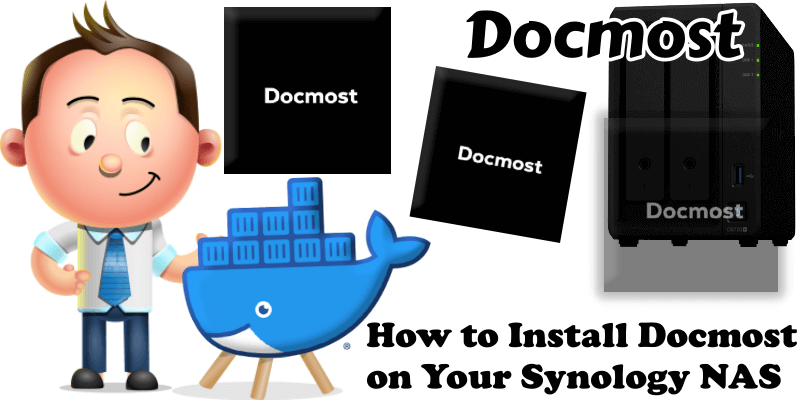
Docmost is an open-source collaborative wiki and documentation software and is designed for seamless real-time collaboration. Multiple users can work on the same page at the same time in real-time without overwriting each other. Whether you’re managing a wiki, a knowledge base, or extensive project documentation, Docmost provides the tools you need to create, collaborate, and share knowledge effortlessly. Docmost has support for Spaces. You can create Spaces for different teams, projects, or departments depending on your needs. Each Space comes with its own permissions. The rich text editor has support for markdown shortcuts. In this step by step guide I will show you how to install Docmost on your Synology NAS using Docker and Portainer.
STEP 1
Please Support My work by Making a Donation.
STEP 2
Install Portainer using my step by step guide. If you already have Portainer installed on your Synology NAS, skip this STEP. Attention: Make sure you have installed the latest Portainer version.
STEP 3
Make sure you have a synology.me Wildcard Certificate. Follow my guide to get a Wildcard Certificate. If you already have a synology.me Wildcard certificate, skip this STEP.
STEP 4
Go to Control Panel / Login Portal / Advanced Tab / click Reverse Proxy. Follow the instructions in the image below.
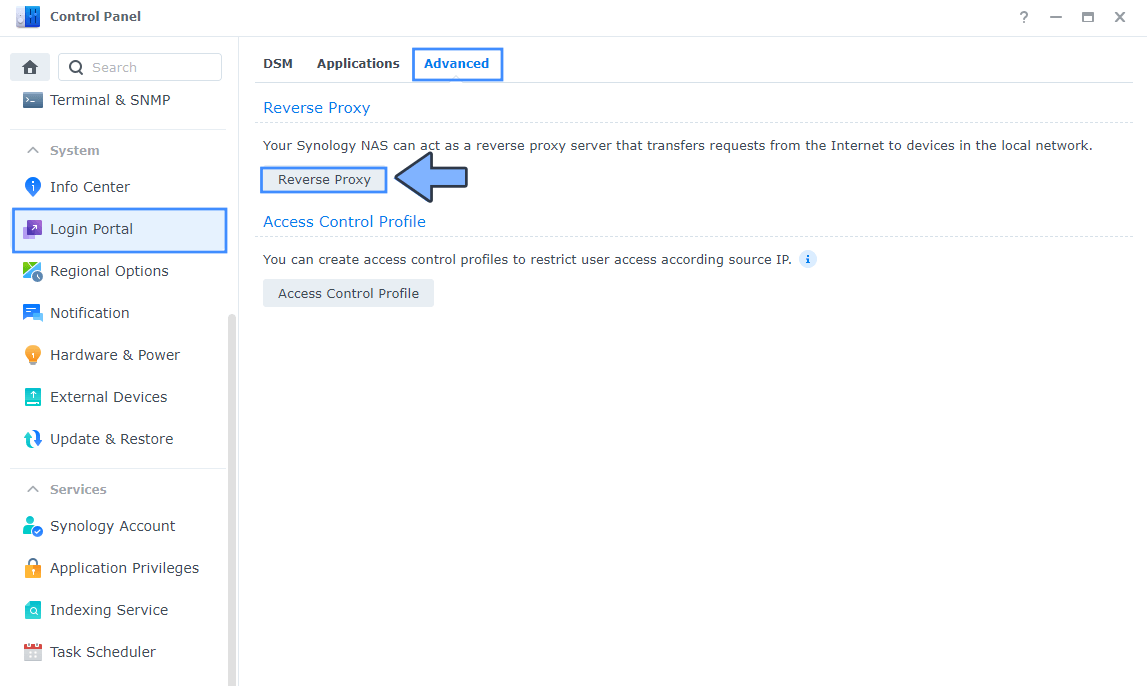
STEP 5
Now click the “Create” button. Follow the instructions in the image below.

STEP 6
After you click the Create button, the window below will open. Follow the instructions in the image below.
On the General area, set the Reverse Proxy Name description: type in Docmost. After that, add the following instructions:
Source:
Protocol: HTTPS
Hostname: docmost.yourname.synology.me
Port: 443
Check Enable HSTS
Destination:
Protocol: HTTP
Hostname: localhost
Port: 3199
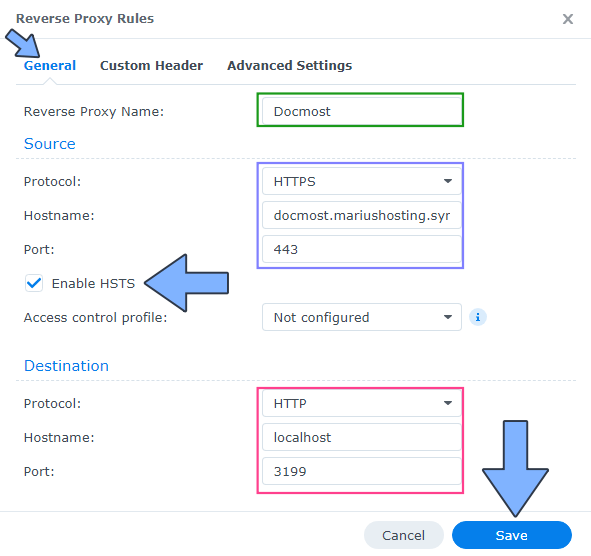
STEP 7
On the Reverse Proxy Rules, click the Custom Header tab. Click Create and then, from the drop-down menu, click WebSocket. After you click on WebSocket, two Header Names and two Values will be automatically added. Click Save. Follow the instructions in the image below.

STEP 8
Go to Control Panel / Network / Connectivity tab/ Check Enable HTTP/2 then click Apply. Follow the instructions in the image below.
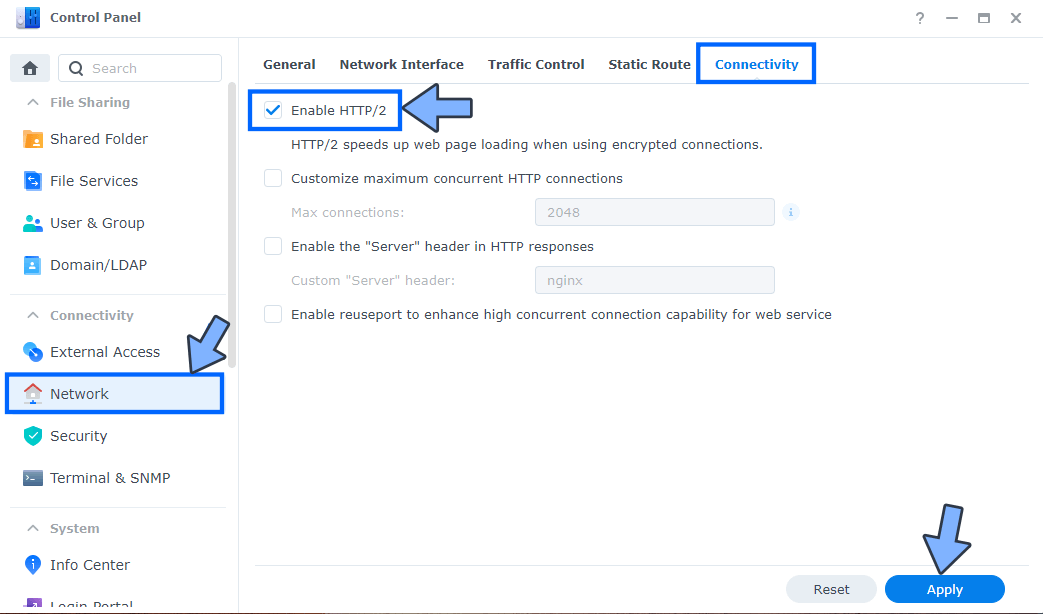
STEP 9
Go to Control Panel / Security / Advanced tab/ Check Enable HTTP Compression then click Apply. Follow the instructions in the image below.
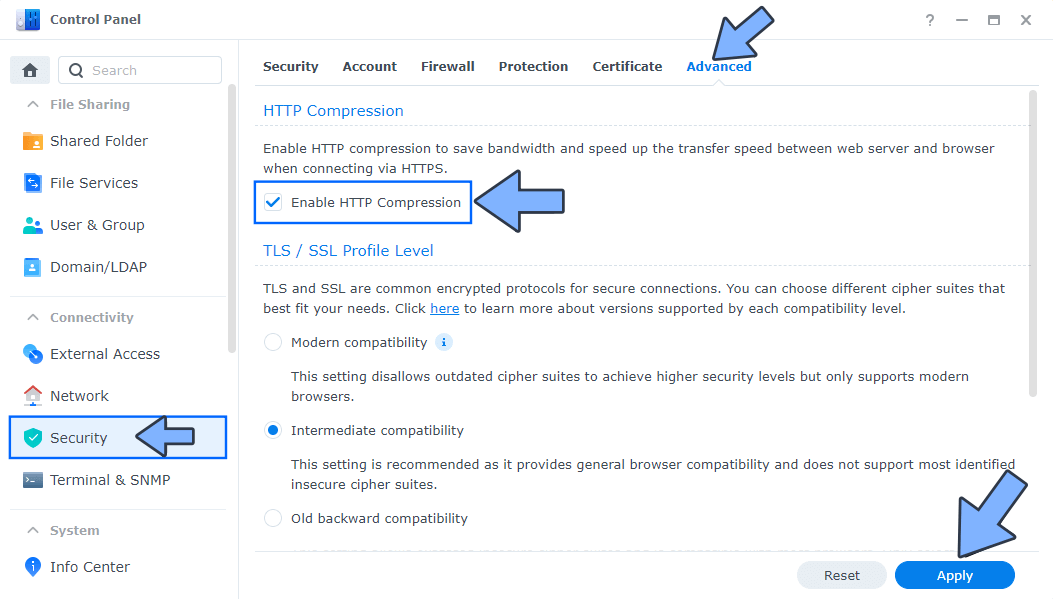
STEP 10
Go to File Station and open the docker folder. Inside the docker folder, create one new folder and name it docmost. Follow the instructions in the image below.
Note: Be careful to enter only lowercase, not uppercase letters.
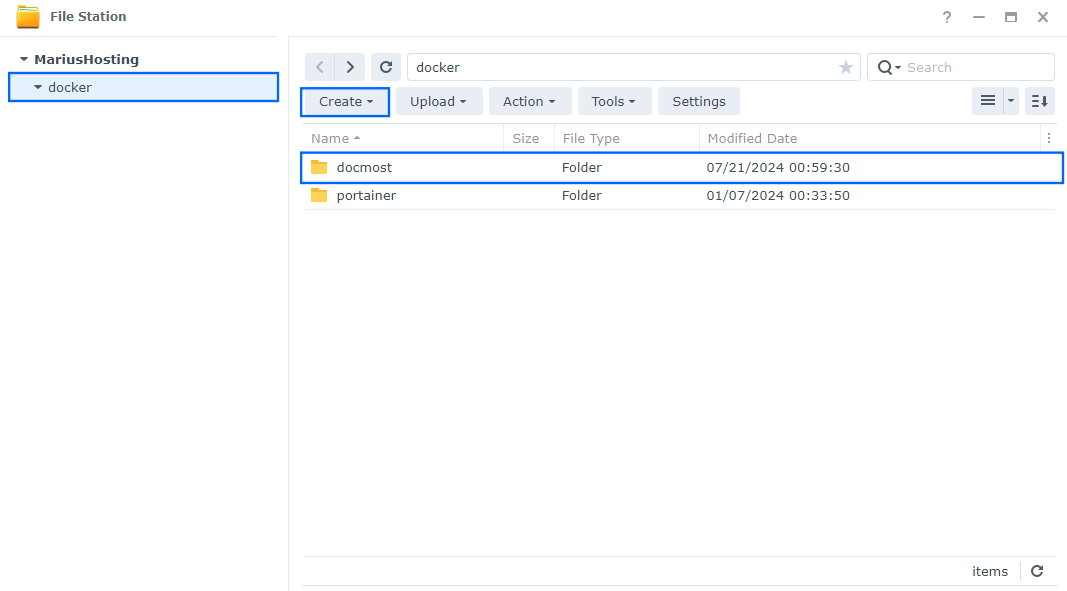
STEP 11
Now create three new folders inside the docmost folder that you created at STEP 10 and name them data, db, redis. Follow the instructions in the image below.
Note: Be careful to enter only lowercase, not uppercase letters.
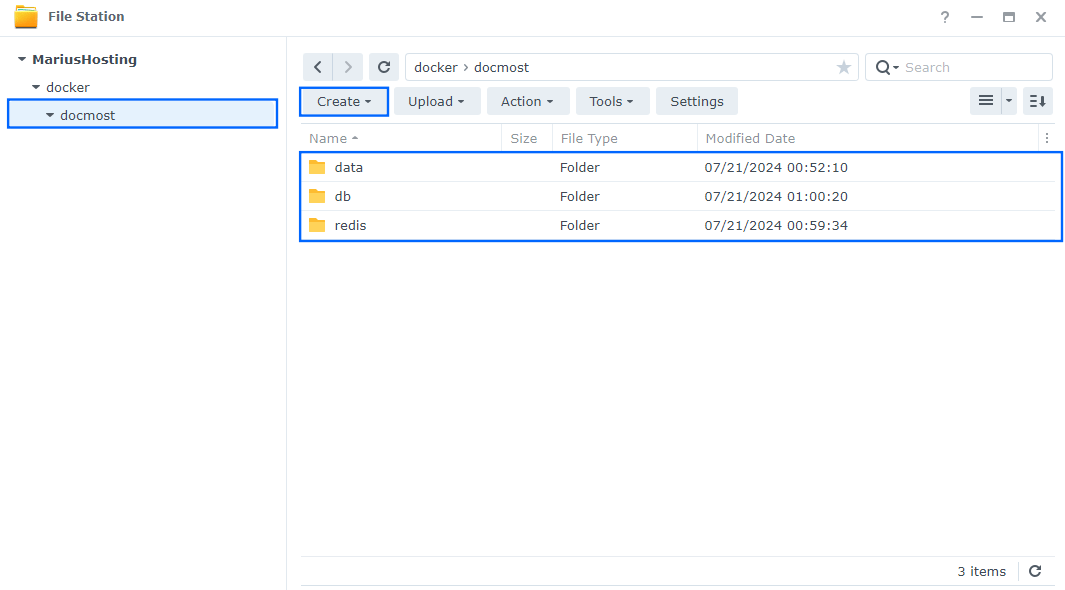
STEP 12
Follow my step by step guide on how to activate SMTP for your Gmail account. This step is mandatory. Note: If you don’t want to use the easiest way for SMTP with Google and you already have SMTP details from your own Mail Server, you can just skip this STEP and use your personalized email SMTP details instead.
STEP 13
Log into Portainer using your username and password. On the left sidebar in Portainer, click on Home then Live connect. Follow the instructions in the image below.
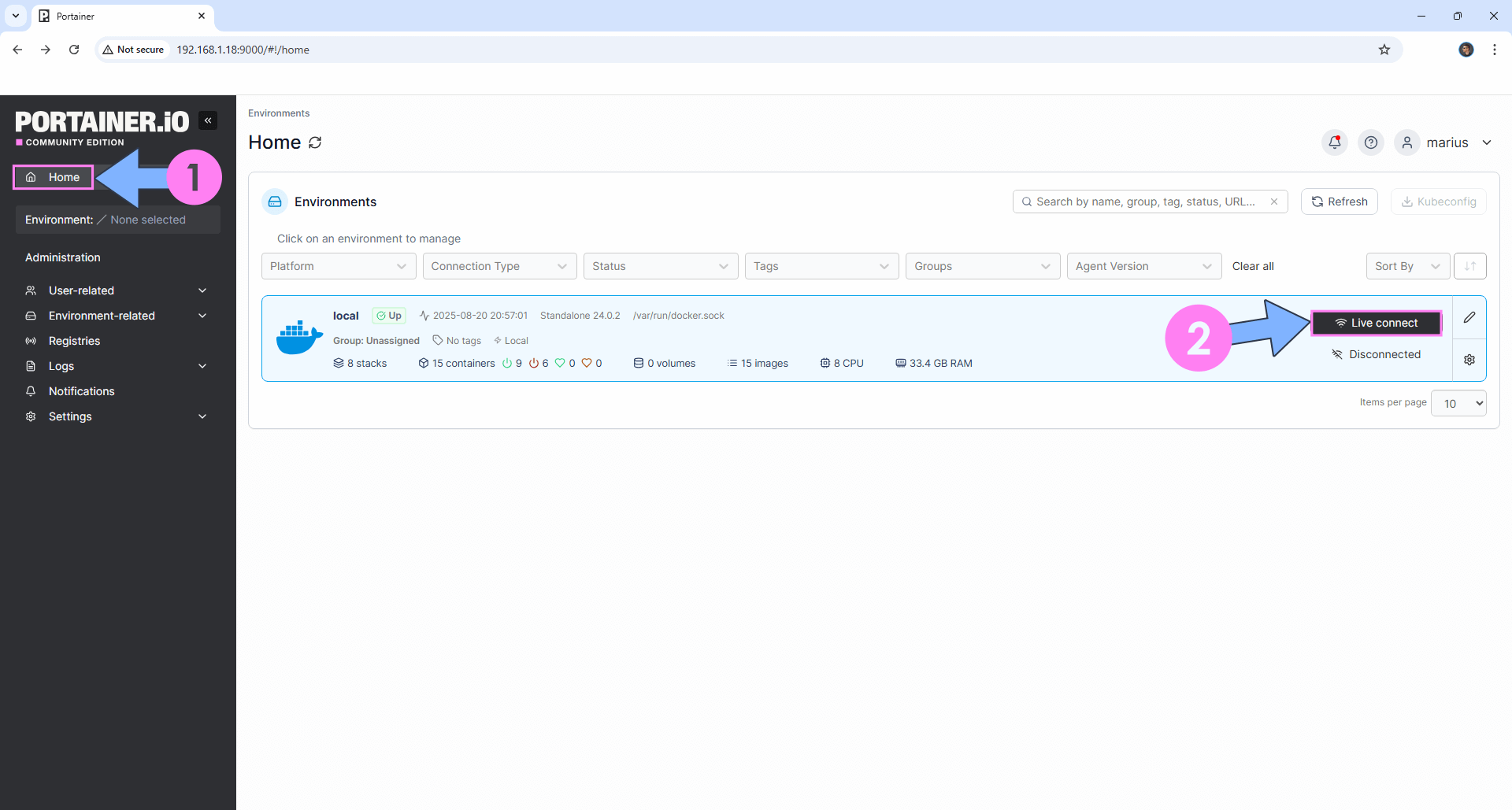
On the left sidebar in Portainer, click on Stacks then + Add stack. Follow the instructions in the image below.
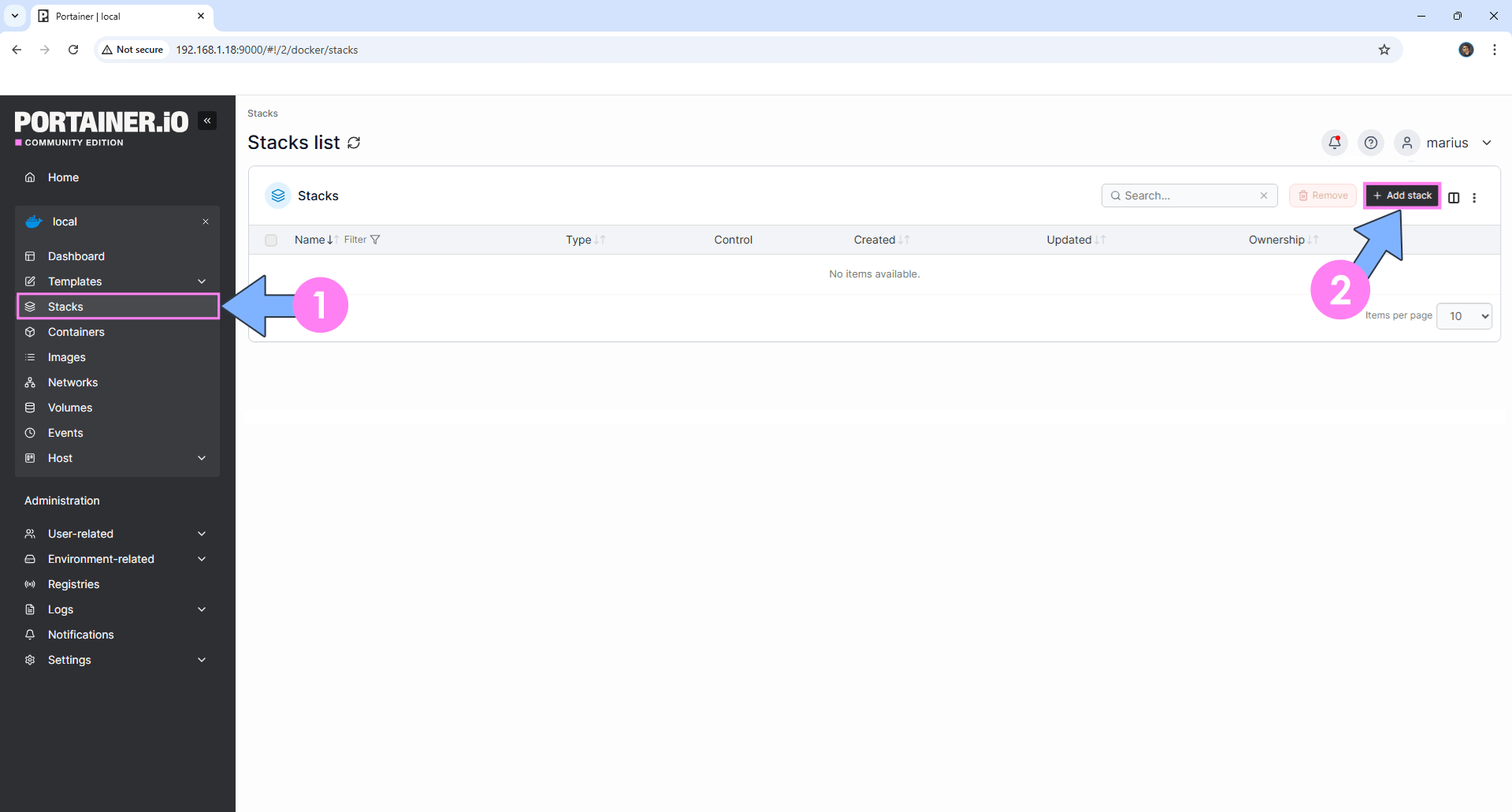
STEP 14
In the Name field type in docmost. Follow the instructions in the image below.
services:
db:
image: postgres:17
container_name: Docmost-DB
hostname: docmost-db
security_opt:
- no-new-privileges:true
healthcheck:
test: ["CMD", "pg_isready", "-q", "-d", "docmost", "-U", "docmostuser"]
timeout: 45s
interval: 10s
retries: 10
volumes:
- /volume1/docker/docmost/db:/var/lib/postgresql/data:rw
environment:
POSTGRES_DB: docmost
POSTGRES_USER: docmostuser
POSTGRES_PASSWORD: docmostpass
restart: on-failure:5
docmost:
image: docmost/docmost:latest
container_name: Docmost
user: 0:0
healthcheck:
test: timeout 10s bash -c ':> /dev/tcp/127.0.0.1/3000' || exit 1
interval: 10s
timeout: 5s
retries: 3
start_period: 90s
depends_on:
- db
- redis
environment:
APP_URL: https://docmost.yourname.synology.me
APP_SECRET: dOxZYTTZgXKMHkqLBIQVImayQXAVWdzGBPuFJKggzcgvgPJPXpWzqzKaUOIOGGIr
DATABASE_URL: 'postgresql://docmostuser:docmostpass@db:5432/docmost?sslmode=disable'
REDIS_URL: 'redis://redis:6379'
DISABLE_TELEMETRY: true
MAIL_DRIVER: smtp
SMTP_HOST: smtp.gmail.com
SMTP_PORT: 587
SMTP_USERNAME: Your-own-gmail-address
SMTP_PASSWORD: Your-own-app-password
MAIL_FROM_ADDRESS: Your-own-gmail-address
MAIL_FROM_NAME: Docmost
ports:
- 3199:3000
restart: on-failure:5
volumes:
- /volume1/docker/docmost/data:/app/data/storage:rw
redis:
image: redis:7.2-alpine
container_name: Docmost-REDIS
security_opt:
- no-new-privileges:true
read_only: true
user: 1026:100
healthcheck:
test: ["CMD-SHELL", "redis-cli ping || exit 1"]
volumes:
- /volume1/docker/docmost/redis:/data:rw
environment:
TZ: Europe/Bucharest
restart: on-failure:5
Note: Before you paste the code above in the Web editor area below, change the value for APP_URL and type in your own synology.me DDNS with https:// at the beginning that you have previously created at STEP 6.
Note: Before you paste the code above in the Web editor area below, change the value for APP_SECRET and add your own APP SECRET. (Generate your own Random 64 length APP_SECRET.)
Note: Before you paste the code above in the Web editor area below, change the value for SMTP_USERNAME and type in your own Gmail address. STEP 12.
Note: Before you paste the code above in the Web editor area below, change the value for SMTP_PASSWORD and type in your own Gmail app password. STEP 12.
Note: Before you paste the code above in the Web editor area below, change the value for MAIL_FROM_ADDRESS and type in your own Gmail address. STEP 12.
Note: Before you paste the code above in the Web editor area below, change the value numbers for user with your own values. (Follow my step by step guide on how to do this.) 1026 is my personal PUID value and 100 is my personal PGID value. You have to type in your own values.
Note: Before you paste the code above in the Web editor area below, change the value for TZ. (Select your current Time Zone from this list.)
Note: If you are NOT using gmail as the SMTP provider, you will need to add the following environment variable SMTP_SECURE: true just under the SMTP_HOST environment variable.
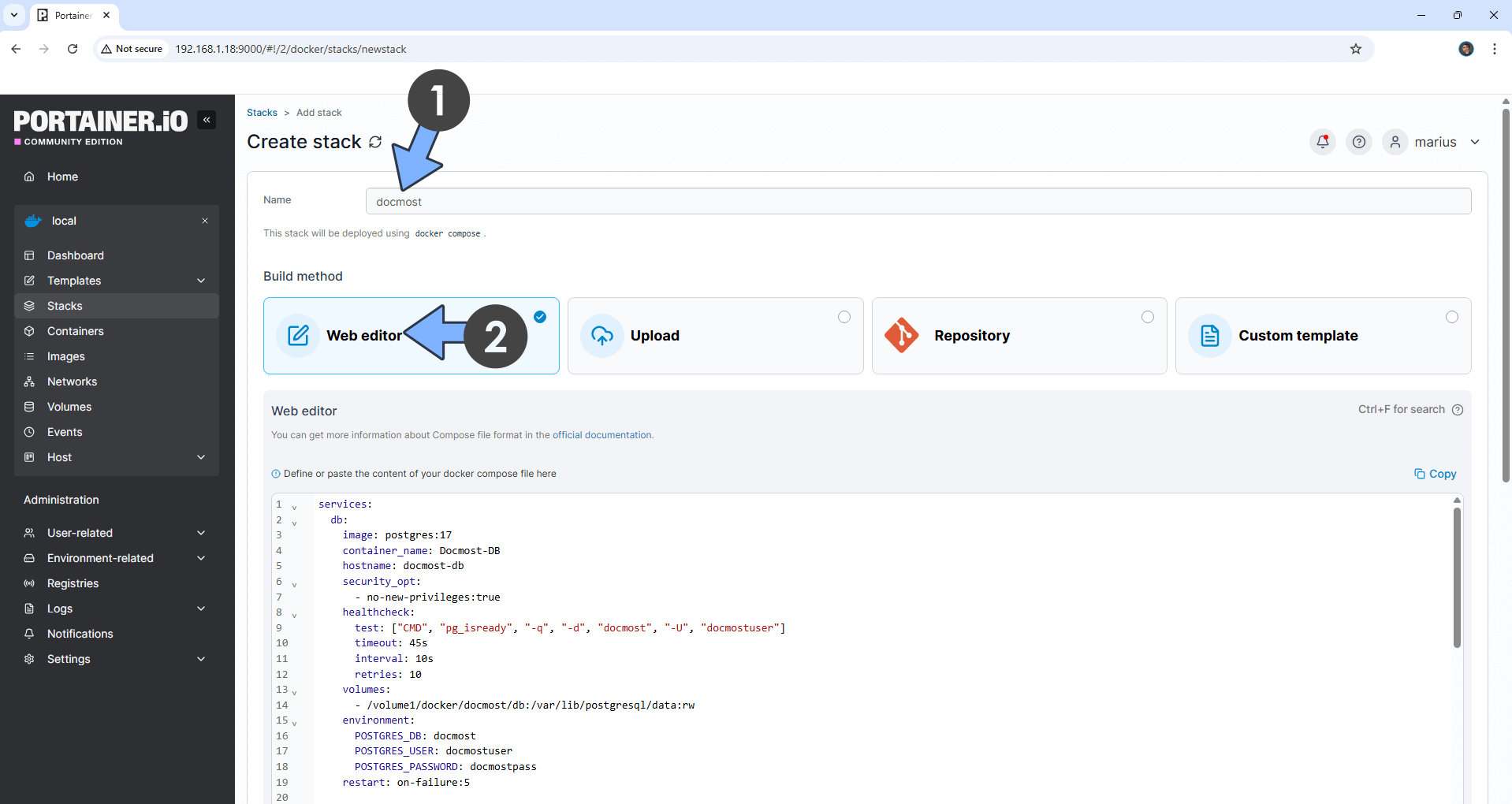
STEP 15
Scroll down on the page until you see a button named Deploy the stack. Click on it. Follow the instructions in the image below. The installation process can take up to a few minutes. It will depend on your Internet speed connection.
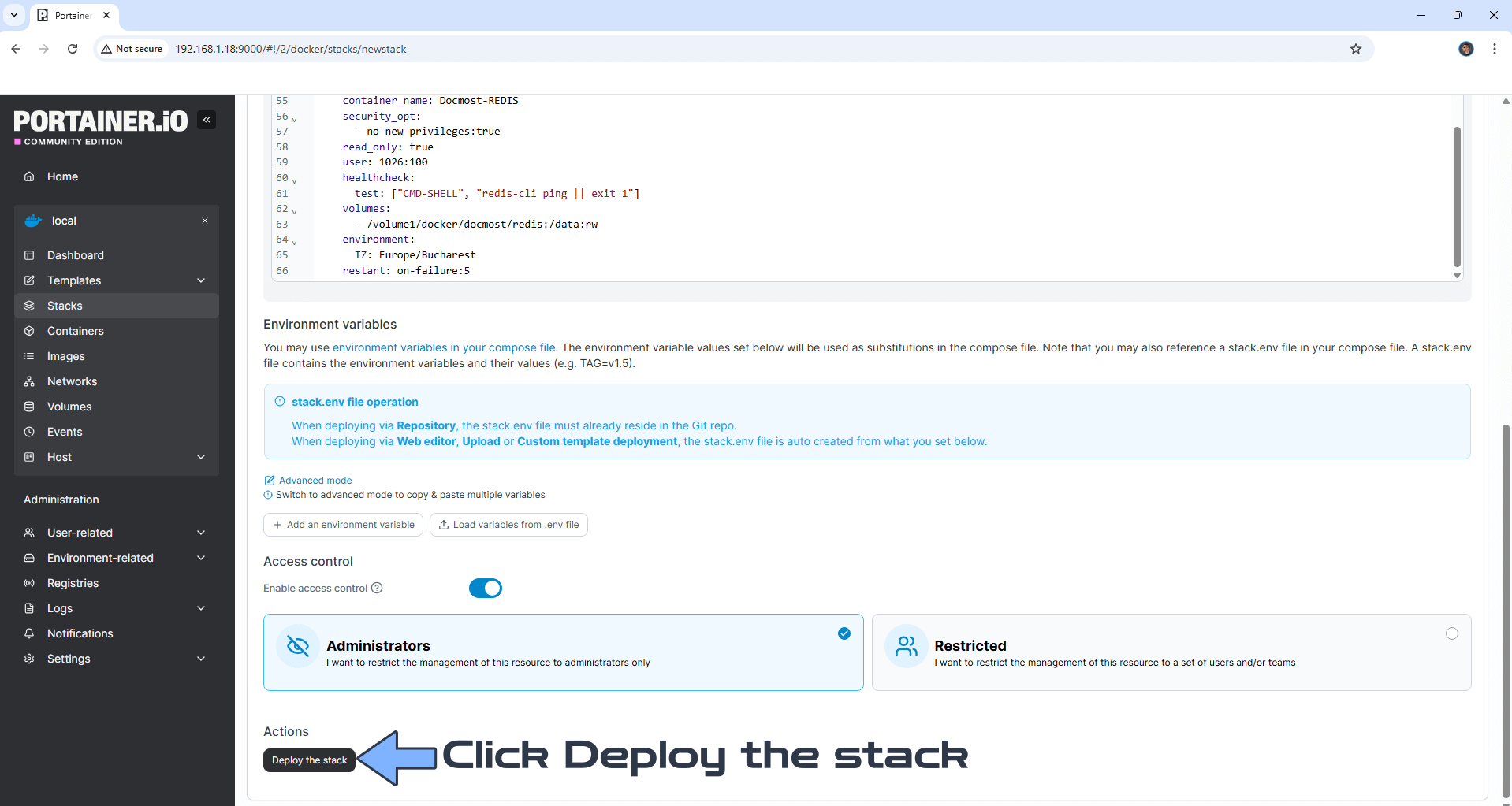
STEP 16
If everything goes right, you will see the following message at the top right of your screen: “Success Stack successfully deployed“.
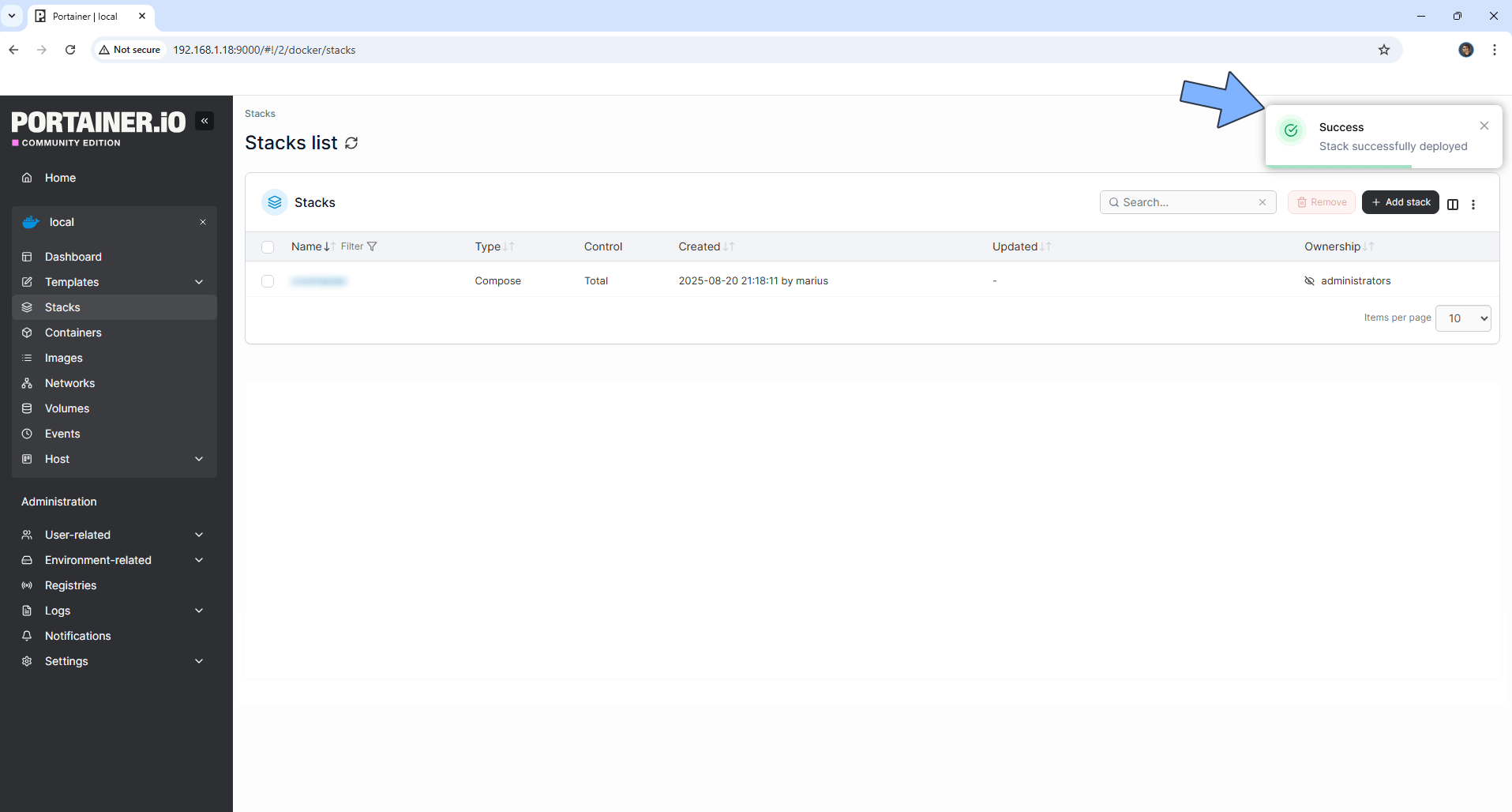
STEP 17
🟢Please Support My work by Making a Donation. Almost 99,9% of the people that install something using my guides forget to support my work, or just ignore STEP 1. I’ve been very honest about this aspect of my work since the beginning: I don’t run any ADS, I don’t require subscriptions, paid or otherwise, I don’t collect IPs, emails, and I don’t have any referral links from Amazon or other merchants. I also don’t have any POP-UPs or COOKIES. I have repeatedly been told over the years how much I have contributed to the community. It’s something I love doing and have been honest about my passion since the beginning. But I also Need The Community to Support me Back to be able to continue doing this work.
STEP 18
Now open your browser and type in your HTTPS/SSL certificate like this https://docmost.yourname.synology.me that you have previously created at STEP 6. In my case it’s https://docmost.mariushosting.synology.me Add your own details, then click Create workspace. Follow the instructions in the image below.
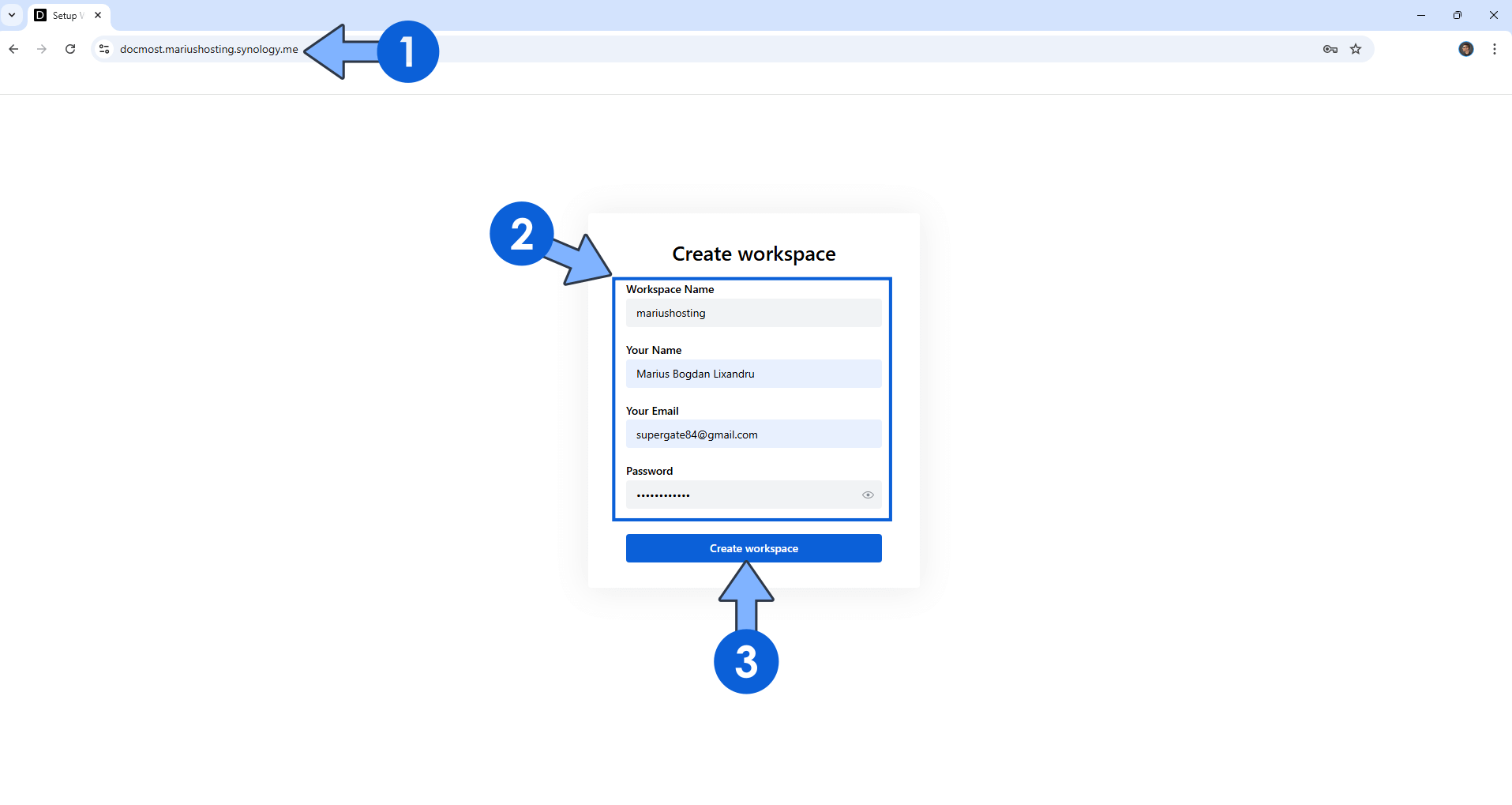
STEP 19
At the top right of the page, click on your workspace name, then click My Profile. Change your profile icon, then click Save. Follow the instructions in the image below.
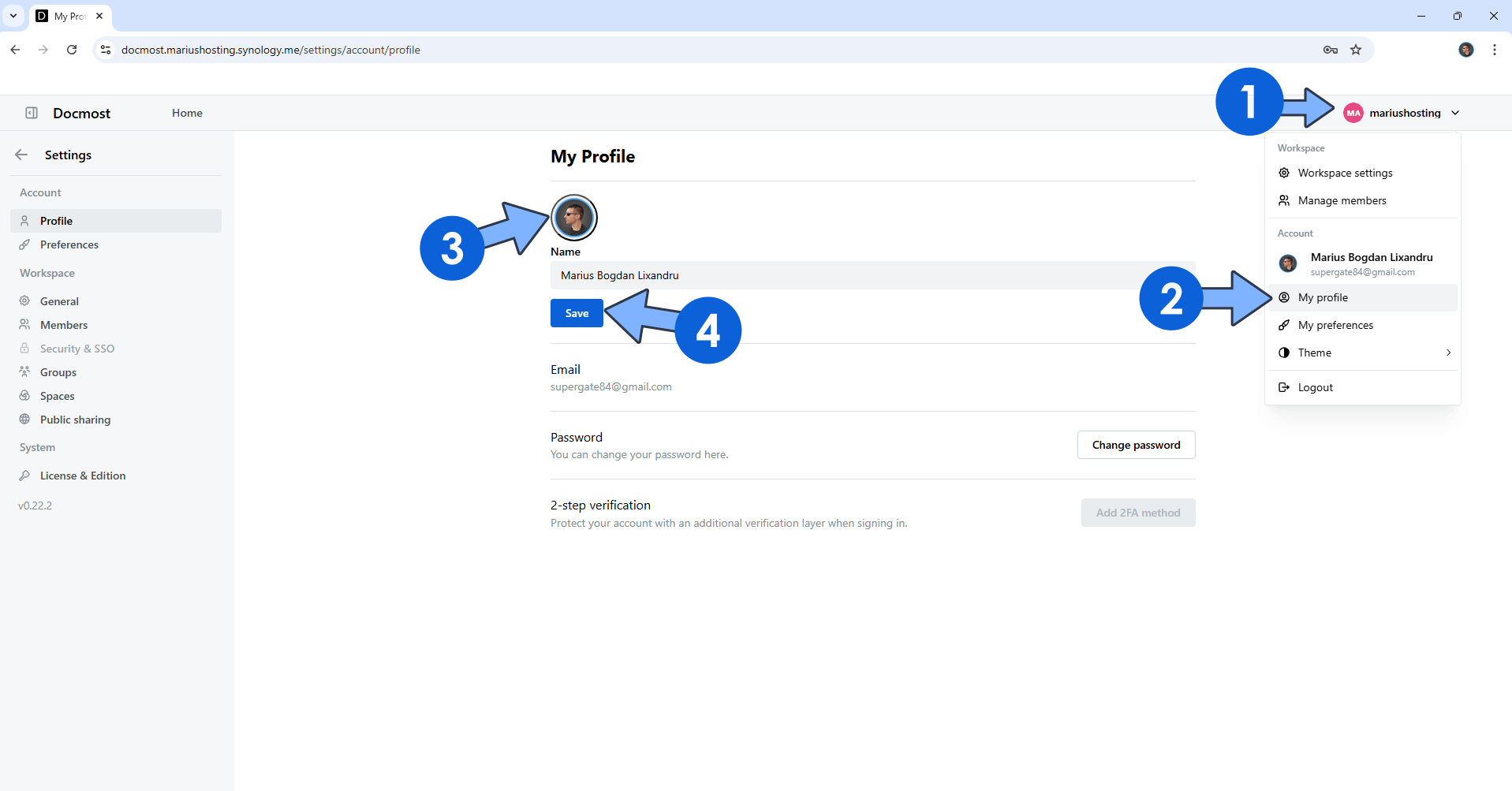
STEP 20
On the left sidebar, click Preferences to switch to Dark theme. Follow the instructions in the image below.
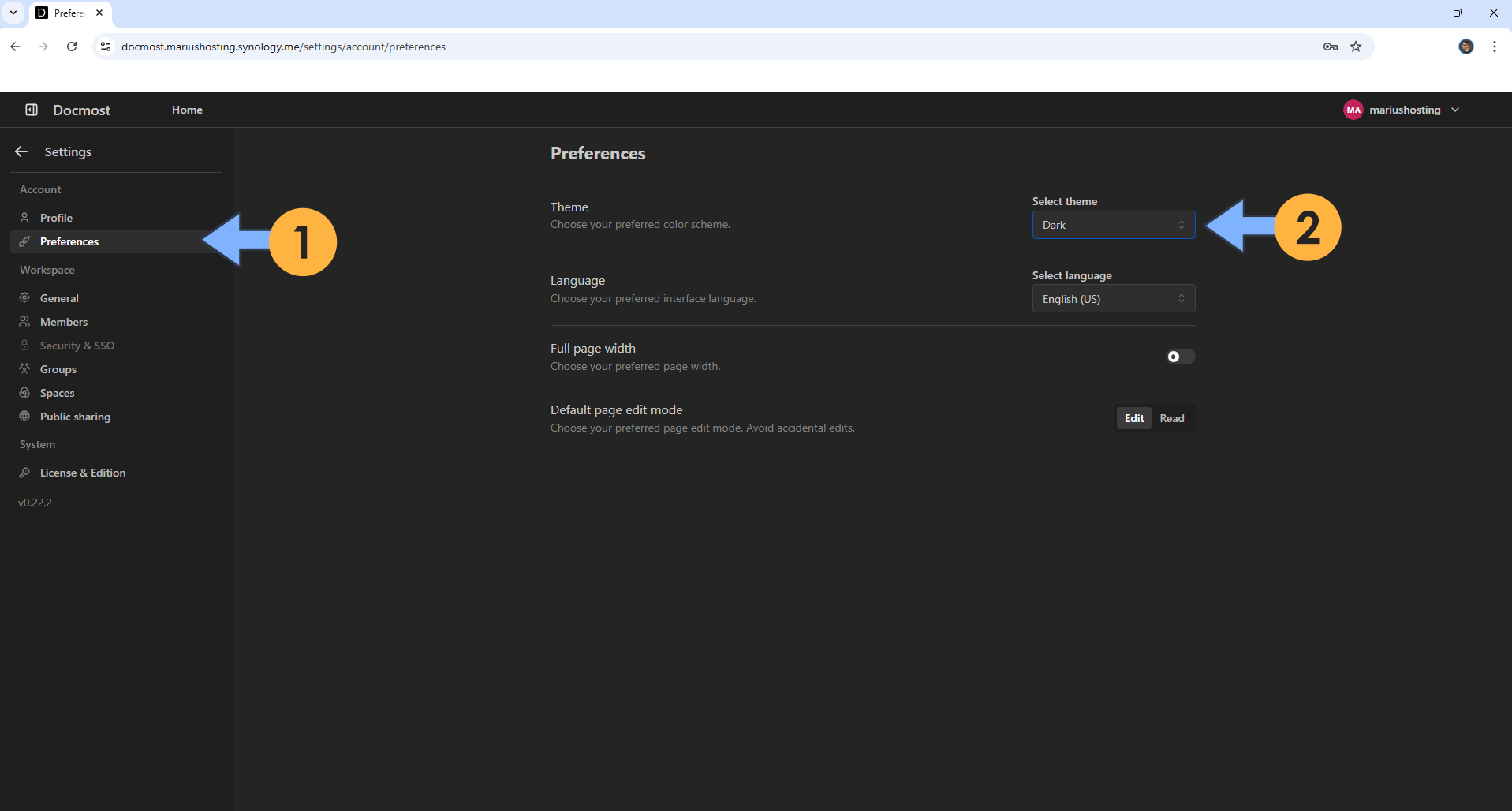
STEP 21
Go to the Home tab, then click General. Follow the instructions in the image below.
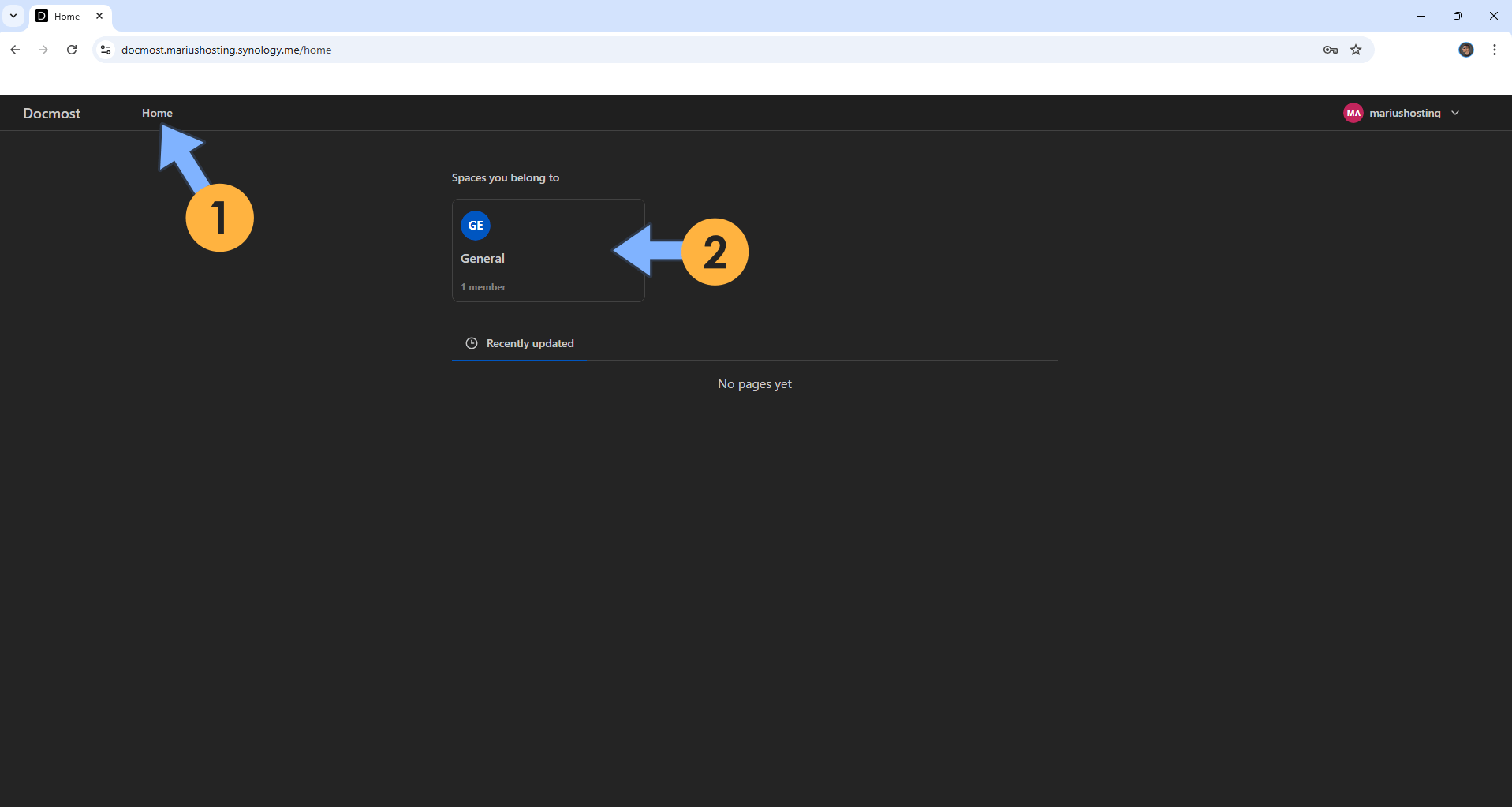
STEP 22
Create a new page. Give a name to your page, then type in / to access the options. Follow the instructions in the image below.
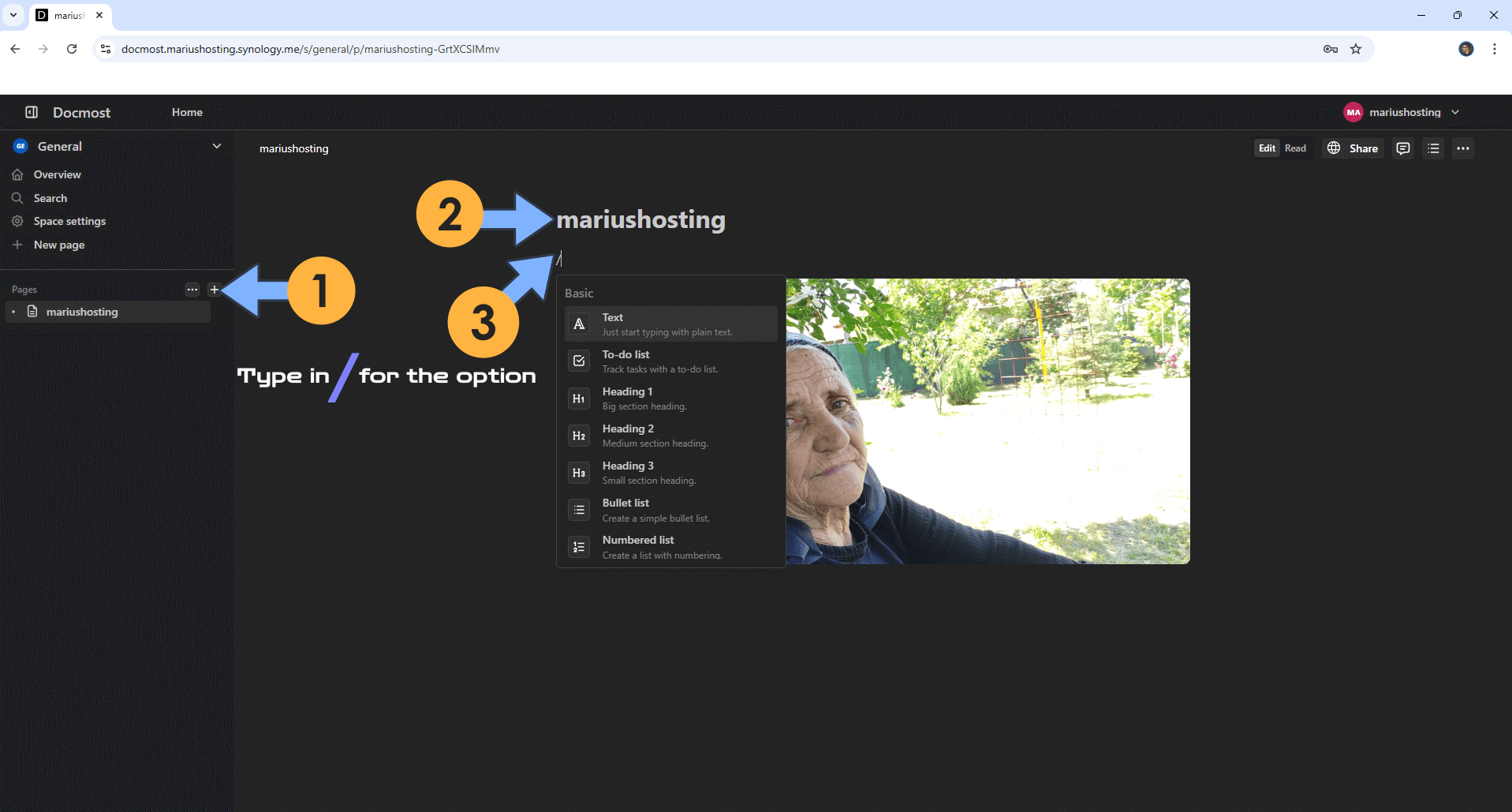
STEP 23
You can also invite new members to join and collaborate with your workspace. Follow the instructions in the image below.
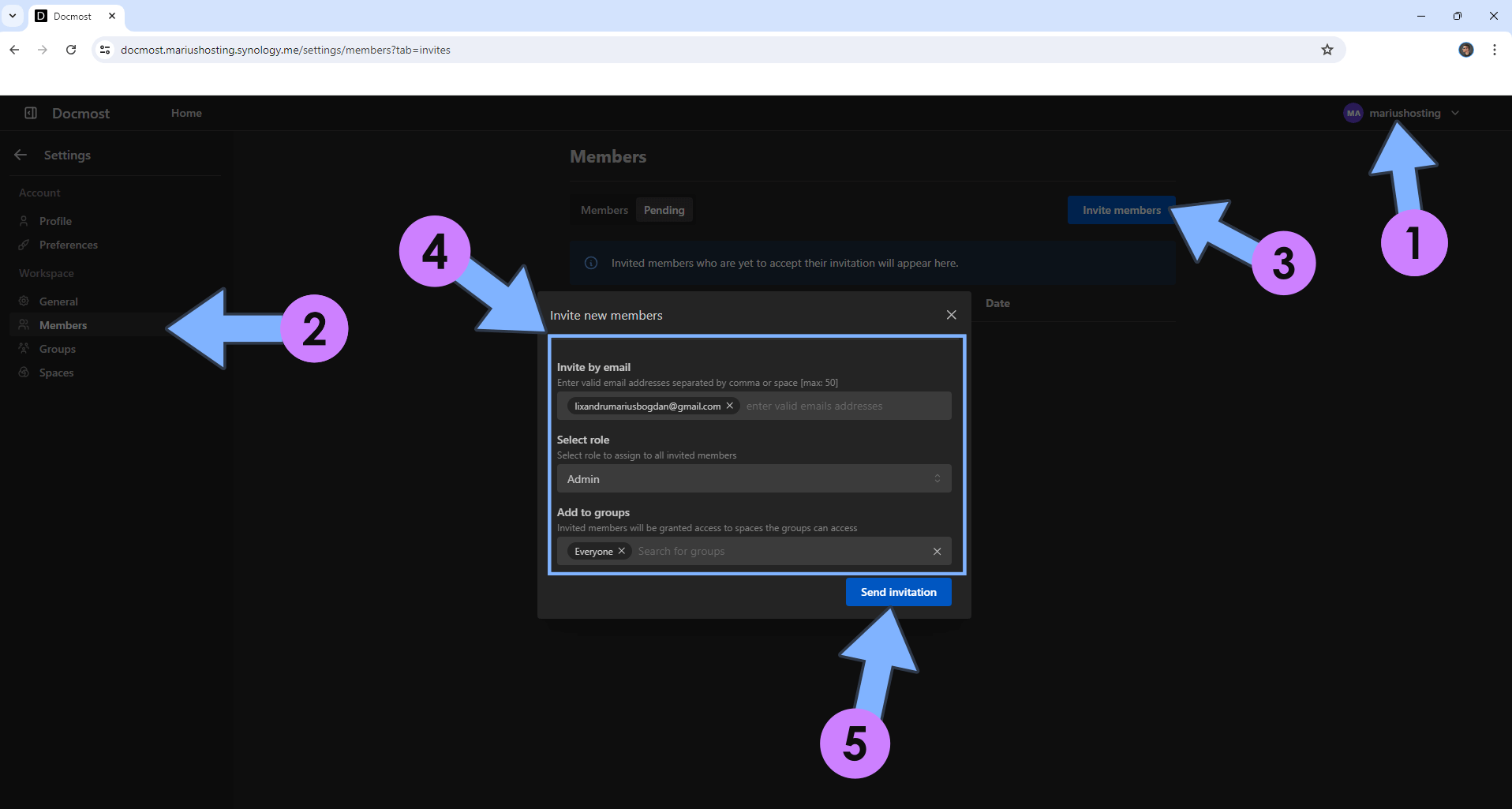
STEP 24
The invited users should check their email, then click Accept Invite to be able to join your workspace.

STEP 25
Your Docmost at a glance!
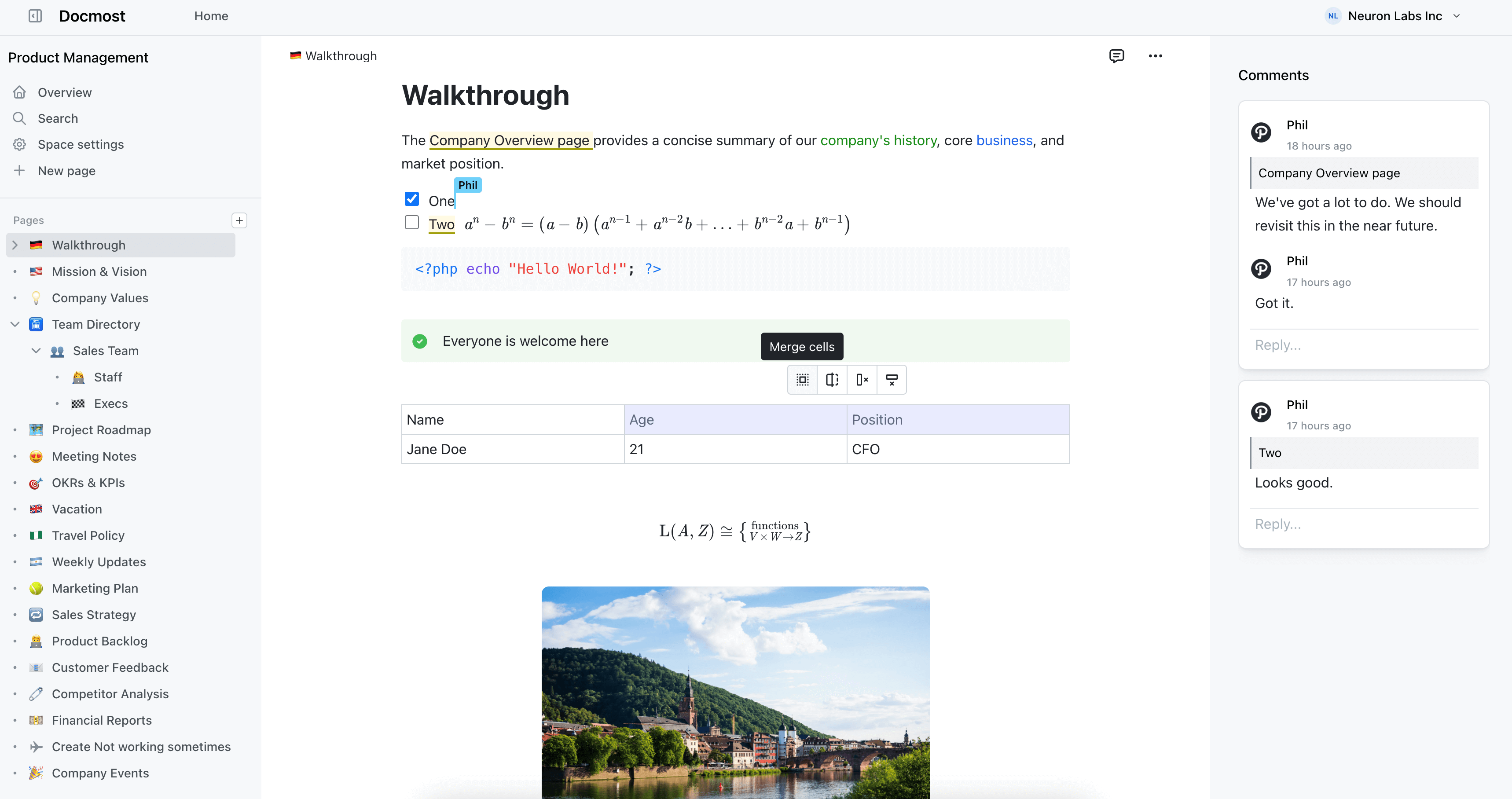
Enjoy Docmost!
If you encounter issues by using this container, make sure to check out the Common Docker issues article.
Note: Can I run Docker on my Synology NAS? See the supported models.
Note: How to Back Up Docker Containers on your Synology NAS.
Note: Find out how to update the Docmost container with the latest image.
Note: How to Free Disk Space on Your NAS if You Run Docker.
Note: How to Schedule Start & Stop For Docker Containers.
Note: How to Activate Email Notifications.
Note: How to Add Access Control Profile on Your NAS.
Note: How to Change Docker Containers Restart Policy.
Note: How to Use Docker Containers With VPN.
Note: Convert Docker Run Into Docker Compose.
Note: How to Clean Docker.
Note: How to Clean Docker Automatically.
Note: Best Practices When Using Docker and DDNS.
Note: Some Docker Containers Need WebSocket.
Note: Find out the Best NAS Models For Docker.
Note: Activate Gmail SMTP For Docker Containers.
This post was updated on Friday / December 19th, 2025 at 9:00 PM
